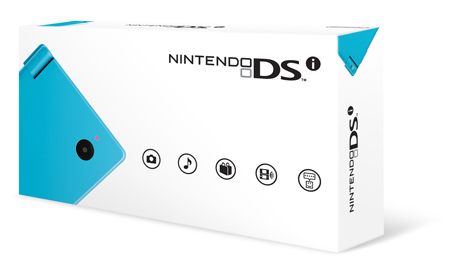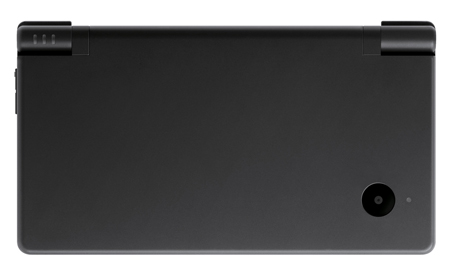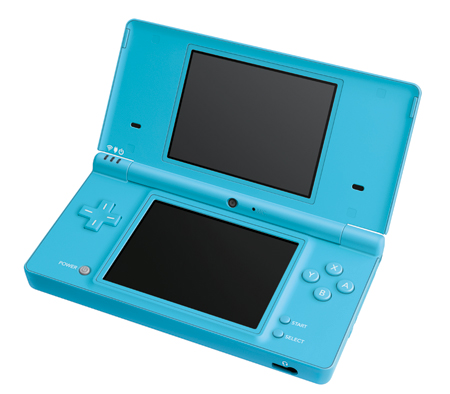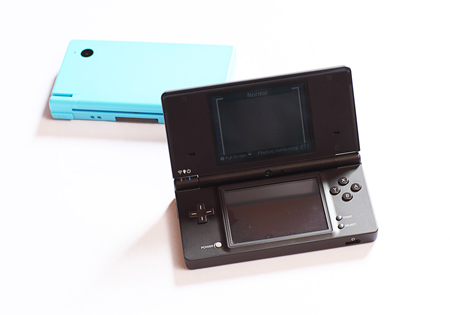- Comics
- Comics Reviews
- Manga
- Comics Reviews
- European Comics
- News
- Comics News
- Press Releases
- Columns
- Spotlight
- Digital Comics
- Webcomics
- Cult Favorite
- Back Issues
- Webcomics
- Movies
- Toys
- Store
- More
- About
By Sean Booker
June 1, 2009 - 12:00
The Nintendo DSi, which launched November 1, 2008 in Japan and April 5, 2009 in North America, is the third version of Nintendo’s dual-screen handheld console. However, unlike the first upgraded version – the DS Lite – this version comes with a good portion of useful and far more significant upgrades. The majority of the updates, whether hardware or software specific, are useful for the most part while a good portion end up seeming gimmicky and somewhat useless.
 |
The most significant hardware update to the DSi is the elimination of the Game Boy Advance (GBA) game port. The previous two DS versions had a slot on the bottom of their systems that allowed a GBA game card to be inserted there so that the DS would be backwards compatible. This isn’t too much of a big deal when you look at the number of people who already own a DS. Players wanting the backwards compatibility most likely already own a GBA or one of the previous two DS systems. People picking up a DSi for the first time (not currently/previously owning a DS) probably aren’t interested in the older generation games. It shows that Nintendo was ready to establish that they have moved on and set their priorities on their newest handheld gaming platform.
Another great addition to the DSi, towering over its previous versions, is the larger screen size. Not only are the screens both noticeably bigger, but they have once again been made brighter. This helps make the game play much more colorful and bold; leading to an overall better time with your video games.
The second biggest hardware addition to the DSi is the inclusion of two built in cameras. One is located on the top of the system, pointed away from the you, while the other is located inside on the hinge’s center. This allows you to be able to take a picture of your subject matter in front of you or take a shot of yourself while being able to see how your photo will turn out.
 |
| It's watching you! |
To use the camera, you can either press the L or R "shoulder" buttons or you can enter the Nintendo DSi Camera option from the main menu. This section allows you to choose whether you would like photos to be taken and saved to the system’s built in memory, or onto an external SD card you may have. Choosing to save photos to an SD card, or transferring them onto it later, allows you to easily upload any pictures you have taken to your computer.
Once you have chosen your storage source, you can begin taking photos and then “edit” them. Your editing options include Distortion, Graffiti, Emoter, Merge and etc. For the most part these options seem quite childish and would, by no means, be used for any serious photography. This shows how the DSi is now being aimed at an even larger age group and video game audience. Since adding goofy sunglasses to your friends face may give the average gamer a quick giggle, it may provide hours of fun for the more casual gamer looking to just mess around.
Though there are a few options that the camera section has that are quite interesting. An option like Emoter – where the system will change the emotion of your face and make it look almost natural, was quite a cool idea. Another, Merge, allows you to take a picture of two people’s faces and the system will automatically merge their images together to make a 50-50 combination of the two. Though, once again, these would never be taken serious for anything other than a quick laugh, it shows that Nintendo did put some thought in to some of the options to ensure people have a good time with the system.
The more minor functions of the camera are using it to create a background image for your main menu or even setting up a calendar in which you can view a slideshow of the photos taken that day. These were probably my favorite features of the camera, since I could actually see myself using them regularly, and enjoyed being able to customize my DSi to my own personal preferences.
 |
| It's still watching you, but at least you can watch it too now. |
The addition of a camera opens Nintendo up to yet another form of game play. With games like WarioWare: Snapped! which utilize the system’s camera for a good portion of the game, we can see new ways to enjoy and play video games.
The next available option from the main menu was Nintendo DSi Sound. This is a section that allows you to record your voice, edit the track or play back your own music. When selecting Record and Edit a Sound, you are brought to a screen with 18 speech bubbles on it. Each one acts as a file to save a recorded track. Selecting one of the bubbles will bring up a panel where you can record a 10 second clip of your liking. Once you have created your track, you can then go in and customize the speed and pitch however you like. Out of the two editing options, this is the one I enjoyed most. Being able to slow down my voice and/or making it a higher pitch was quite amusing.
Your other option is represented by four panels together and basically allows you to change the sound of your clip. Your options from there are Parakeet, Electric Fan, Low Harmony and Trumpet. Each of these have sub categories in them, for example: clicking the parakeet button twice will change it to Robot and thus change the sound of your clip to a robot’s voice. Like the majority of the Camera program’s options, these come across as nothing more than a quick, two minute demo. I couldn’t see myself ever coming back to use these functions after I had tried them once or twice.
Instead of recording your own audio tracks, the DSi allows you to import music from an SD card. And though it promised me the ability to play around with pitch and speed of my songs, I was never able to get it to work. The machine asked for ACC formatted music and when I uploaded in the requested file format, it still came up as unreadable. It was a shame that I couldn’t get this function to work.
Overall this program came up a bit short in terms of enjoyment. I can’t see myself ever coming back to the Nintendo DSi Sound option. Like the Camera program, the majority of this didn’t catch my attention for longer than five minutes. Maybe if the SD card option had worked out my opinion would have changed a bit.
It is likely that the biggest addition to the system is the inclusion of a DSiWare
shop (or Nintendo DSi Shop). This acts like the Wii Shop Channel with which, if you
have a wireless internet connection, you can go online and purchase
games. The new DSi Shop also gives you the option of purchasing not only
games, but gadgets and other add-ons for your system. These can range
calculators to an Internet browser. When shopping, you are presented
with four options in terms of price points: free, 200, 500 and 800+ Nintendo DSi Points. These Points work similarly to Wii Points, except they only work with the DSi.
This addition is likely one of the best features of the DSi, as games are now being made for the system itself, and come at a much cheaper price point. Of course, the games aren’t as lengthy as a retail game, but if we are presented with some of the games coming out on WiiWare (the Nintendo Wii’s downloadable game service) then this will be a great program. It also opens up another stream of marketing when presented to independent game companies.
At the same time, however, there are a lot of useless products to download from the DSi Shop. I don’t really need an Animal Crossing themed clock, especially when the DSi has a built in calendar and digital clock. As eager as I am to see what great products will be launched through the DSiWare service, it seems that you’ll need to keep an eye on what’s really worth your money, and what is just junk.
 |
| The two colours available at launch. |
Like the previous DS versions, the DSi still comes with the options of PictoChat and DS Download Play. PictoChat is a chat room like program that allows any version of DS to chat if they are within a set proximity. Here you can type messages to one another or even draw pictures.
DS Download Play is a feature that allows users to engage in multiplayer sessions when only one person has the game or temporarily download game demos from DS Download Stations. For example, you can play some multiplayer Mario Kart DS together, even if only one of you has purchased the actual game.
The majority of the updates on the Nintendo DSi aren’t anything game changing. If you are just looking for a machine to play the average DS branded game, any of the three versions will be fine, and I'm betting that you, most likely, own one of the previous ones already. If you’re a core gamer, you won’t find many of the software inclusions to be very significant. The majority of the in-game programs won’t keep your interest for very long. If you already own one of the original two DS versions, it would be hard to recommend this as a “for-sure-deal.”
That
being said, if you’re on the market for a DS and don’t know what
version to pick up – this is the one to get. With all the upgrades
on the original format, it becomes a well structured system. And
though it may not be the best MP3 player or camera, with the larger,
brighter screens it stands as the best to play your Nintendo DS games
on. And with the addition of the new downloadable game service:
DSiWare, more games are becoming available to play than ever on the
machine. The Nintendo DSi is a great and well thought out machine; it
just sets itself back by not bringing enough new and significant
features to warrant a $200 price point.
When it comes to my verdict on whether you should rush out and purchase a DSi, or hang back, I remain a little on the fence. If you own a previous Nintendo DS handheld, I would recommend holding on to your money. As I have stated before, the number of updates to the DSi don't add a significant change to what the pervious DS versions can do. But if you’re a new gamer out there and looking to pick up one of the Nintendo DS versions, your best bet would be the Nintendo DSi. Though it does cost more than the DS Lite's current retail price, you are getting all the new features. That being said, if you are only wanting a machine to just be able to play the games, either would be fine and going with an older DS model will save you money.